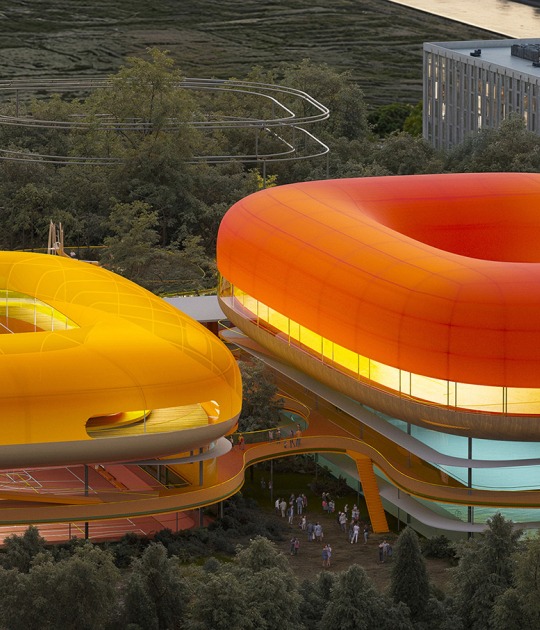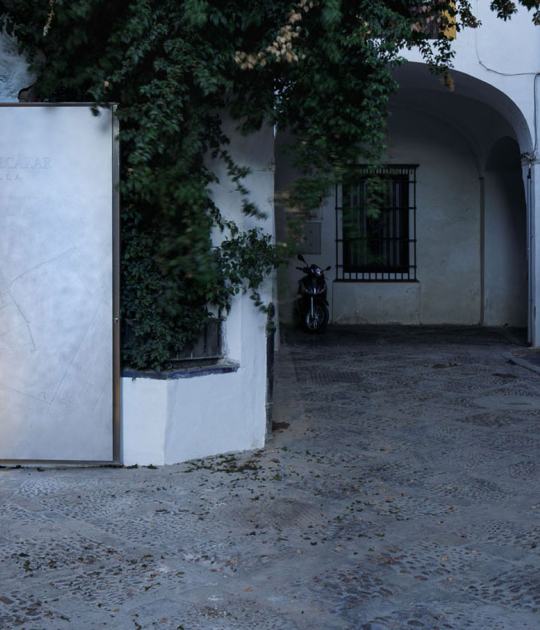The space is perceived as a single multifunctional element thanks to a plot of thirteen vaulted modules of uniform height, where the succession of vaults and pillars in a grid on a continuous pavement favor the homogeneous perception of the area. Steel and glass are the materials chosen for the intervention due to their neutral and abstract appearance, seeking to blur their presence in coexistence with the old factories.

Renovation and museography of Room Zero of the Museum of the University of Seville by Reina & Asociados Estudio de Arquitectura SLP. Rendering by Reina & Asociados Estudio de Arquitectura SLP.
Project description by Reina & Asociados Estudio de Arquitectura SLP
The Factory was a superb complex built in the 19th century. 18th century outside the city walls to accommodate a monopoly of great economic and strategic importance such as tobacco production. Since its beginnings and practically continuously, the Tobacco Factory has been transformed to adapt to new situations that lead it, in the mid-20th century, to its adaptation as the headquarters of the University of Seville, a use that continues to this day. The building treasures a dense narrative related to the intense activity displayed throughout these centuries, which has left its mark on the imposing scale of the spaces and the powerful materiality of the factories. The present performance is understood as another stage in the life of the building, an architecture that is in process to continue responding to the passage of time, now ready to receive new cultural content.
The project arises from respect for the architectural form of the building itself, what has made its transformation and, therefore, its continuity possible over time. Guided by the rationality of the compositional scheme of the complex and the spatial sequences inspired by its industrial past, the elimination of added elements and compartmentalizations is aimed at improving the understanding of these spaces with a great capacity for evocation, recovering their identity and original qualities to establish relationships. more flexible between them. As a result, an original area of some magnitude is released, made up of a plot of thirteen vaulted modules located on the main façade and next to the old halt, which represents an unprecedented circumstance in the future of the property.

Renovation and museography of Room Zero of the Museum of the University of Seville by Reina & Asociados Estudio de Arquitectura SLP. Rendering by Reina & Asociados Estudio de Arquitectura SLP.
In order to highlight this fragment of the Tobacco Factory and respond to the new requirements - the presentation of the museum pieces that are the heritage of the University of Seville - minimal and perfectly recognizable interventions are proposed that, preserving the character singularity of the spaces, guarantee maximum technical and functional flexibility.
The proposal is based on the careful restoration of this architecture, recovering the historical coverings that could be preserved after the renovations that occurred. The orderly succession of vaults and pillars in a grid helps the space to be perceived as having a powerful unity, to which the introduction of natural lighting from its two opposite fronts and the recognition of a continuous floor plane, a technical plane with a ordered layout of facilities as a capillary network. In a complementary manner, indirect and homogeneous lighting of the vault system is introduced from a suspended and light plane of electrified rails that, in turn, flexibly serves the exhibition area.
In this context, with the spaces restored and technically equipped, museography is understood as a mediation system that accommodates the perception of the pieces to the scale of the containing space. The new exhibition elements, installations and auxiliary uses appear as installed units or furniture, building an intermediate layer between the monumental scale of the Factory and that of the visitor, which facilitates their interaction with the exhibition. In their geometry, they respond to a constant module of uniform height, pure and edged volumes that acquire diverse shapes to adapt to different functions depending on the location. The use of steel and glass is proposed, materials with a neutral and abstract appearance that aspire to blur their presence in coexistence with the old factories.





























